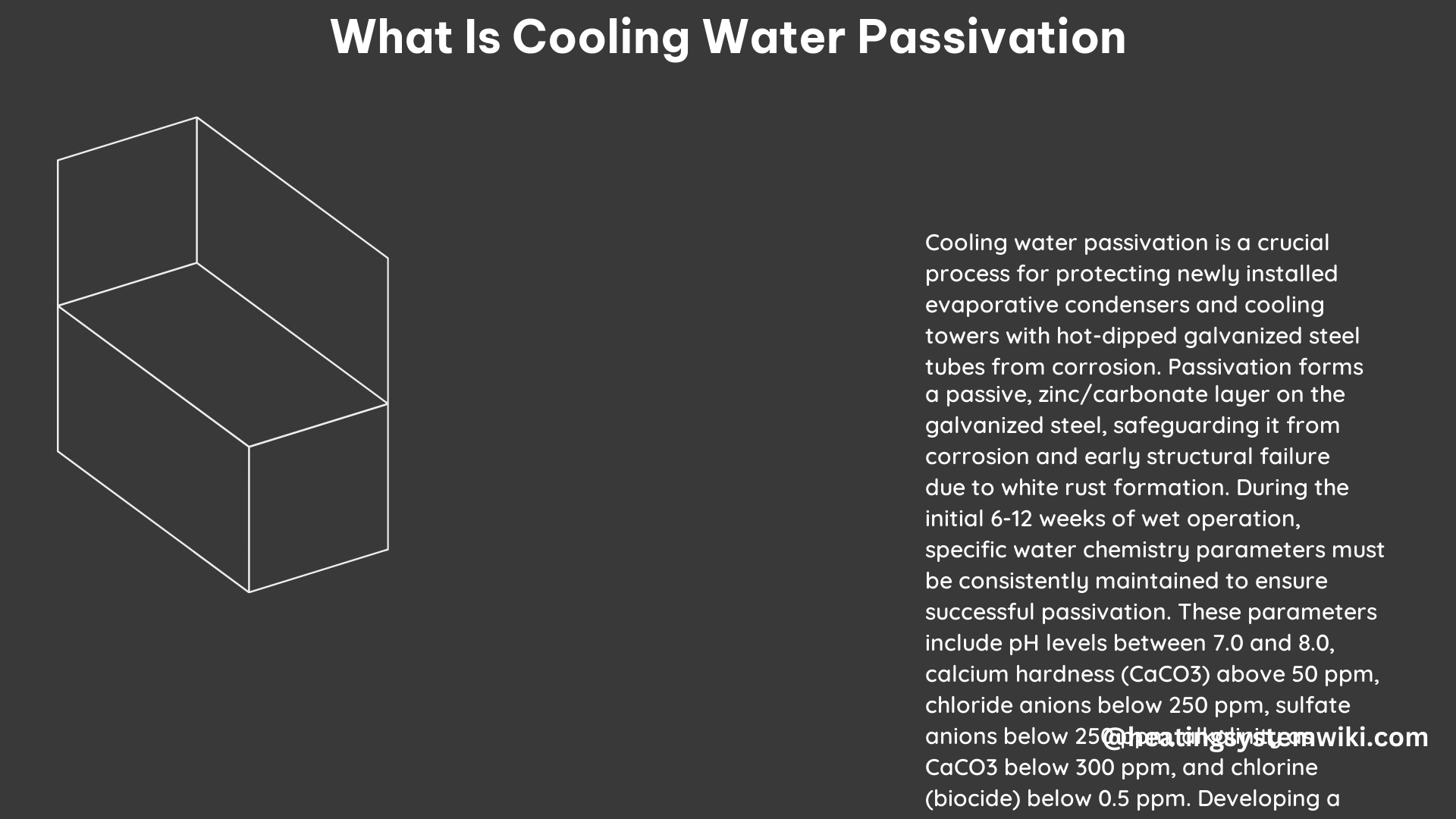Cooling water passivation is a critical process that extends the lifespan and prevents corrosion in newly installed evaporative condensers and cooling towers with hot-dipped galvanized steel tubes. This process creates a passive, zinc/carbonate layer on the galvanized steel, protecting it from corrosion and early structural failure due to the formation of white rust. Understanding the intricacies of cooling water passivation is essential for maximizing the service life of galvanized equipment.
The Passivation Process: Maintaining Water Chemistry
The passivation process involves meticulously maintaining specific water chemistry parameters for an initial 6-12 weeks of wet operation. Elevated temperatures can have a detrimental effect on the passivation process, so it is crucial to run new galvanized equipment without load for as much of the passivation period as possible.
The key water chemistry parameters that must be consistently maintained include:
| Parameter | Acceptable Range |
|---|---|
| pH | 7.0 – 8.0 |
| Calcium Hardness (CaCO3) | > 50 ppm |
| Chlorides (anions) | < 250 ppm |
| Sulfates (anions) | < 250 ppm |
| Alkalinity as CaCO3 | < 300 ppm |
| Chlorine (biocide) | < 0.5 ppm |
Maintaining these parameters is essential for the successful passivation of the galvanized surfaces, ensuring the long-term protection and optimal performance of the cooling equipment.
Designing and Executing the Passivation Plan

Designing and executing a comprehensive passivation plan upon equipment startup is crucial for maximizing the service life of the evaporative cooling equipment. This plan should begin with a thorough analysis of the makeup water, providing valuable insights into the existing water chemistry.
The passivation plan should include detailed information on how the critical water chemistry parameters will be maintained and monitored throughout the process. Depending on the makeup water composition, the addition of specific chemicals may be required to consistently maintain the desired parameters.
If chemical treatment is necessary, it is essential to ensure that the chemicals are pre-diluted and fed to the system using automated equipment. This approach helps to maintain the precise dosage and distribution of the chemicals, optimizing the passivation process.
Monitoring and Inspecting the Passivation Process
Routine visual and photographic inspection of the galvanized surfaces should be an integral part of the passivation plan. Successful passivation will result in the bright new galvanized steel turning to a duller grey layer, indicating that the zinc has been properly passivated.
Identifying white rust early in its formation is crucial, as it can ultimately prevent serious damage from occurring. White rust is a visible indicator of the breakdown of the passive zinc/carbonate layer, and its early detection can allow for timely intervention and corrective measures.
The Importance of Proper Passivation
Passivation is a critical step in the startup of new cooling systems, and Chardon Labs offers comprehensive cooling tower treatment for new systems with two clear objectives: thorough cleaning and proper passivation.
The startup of a new system is a pivotal moment in the life cycle of the equipment, and Chardon Laboratories understands the vital importance of properly cleaning and passivating the systems. This ensures excellent protection, long life, and optimal operation of the cooling equipment.
By following a well-designed passivation plan and maintaining the critical water chemistry parameters, operators can maximize the service life of their evaporative cooling equipment, minimizing the risk of corrosion and white rust formation.
Conclusion
Cooling water passivation is a complex but essential process that extends the lifespan and prevents corrosion in newly installed evaporative condensers and cooling towers with hot-dipped galvanized steel tubes. By understanding the intricacies of this process and following a comprehensive passivation plan, operators can ensure the long-term protection and optimal performance of their cooling equipment.
References:
– Evapco – Passivation of Galvanized Steel in Cooling Towers
– Chardon Labs – Cooling Tower New System Startup
– Faiz ur Rehman – Best Practices for Cooling Water System Passivation
